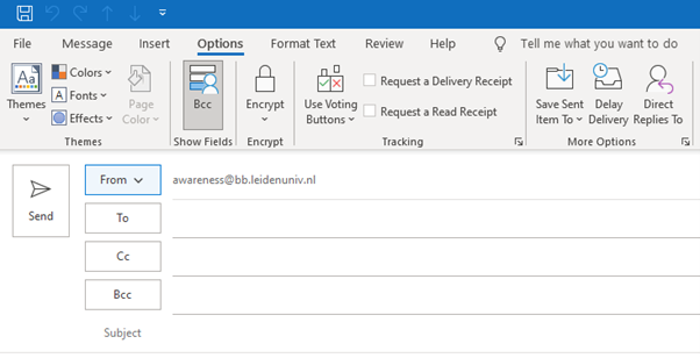Cybersecurity: use BCC rather than CC in your emails
In our work we exchange a lot of emails with one another. But is that always such a good idea? You run the risk of sharing unintended parts of data with too many people. If you have sent an email – with or without an appendix – it is almost impossible to withdraw it. It’s is far better to share sensitive information and documents via cloud storage services, such as Onedrive or SURFdrive.
Only use CC when it's necessary
If you are sending an email to a large group of recipients, be aware that the CC field is visible to everyone and that you are sharing a lot of unnecessary personal data. In some cases, this could constitute a data leak. If you want to send a mail to a large number of people, always use the BCC field.
The difference between BCC and CC
The difference between BCC (Blind Carbon Copy) and CC (Carbon Copy) is that when you use BCC the individual recipient sees only his or her own email address. If the recipient wants to respond, then only the original sender will receive the response. By using BBC, you are letting the communication flow via one central point. With CC, all recipients see the complete mailing list and can mail to anyone. With large groups, you need to be extra vigilant about disclosing data.
Tips for using BCC and CC
- It is always preferable to use BCC, especially when addressing a group of recipients who do not need to communicate with one another. This could be the case with newsletters or timetable changes, for example.
- Only use CC when all the visible recipients need to be able to communicate with one another via email. This could include, for example, if the members of the group of recipients are known to one another (large internal discussions) and if all the recipients need to know that other people have also received this mail. Sometimes we CC people for information; it may be relevant for the other recipients to know who has seen the information.
- Are you using BCC? You can let your recipients know that there are more people in the BCC. You don’t have to mention who they are.
- Make sure you always have the BCC field open in Outlook. Click on ‘Options’ and then on ‘BCC’.

Don’t give hackers a chance
Be aware of cyber risks. This is very important in preventing incidents. Did you know, for example, what a passphrase is and why this is more secure than a short password? And do you know how to identify a phishing mail and who you need to notify if you receive one? For the answers to these questions as well as more tips, read the working securely online page. Or test your knowledge with the e-learning modules of Awaretrain. Log in with your ULCN account. When you first log in, it can take a day for the modules to appear.
